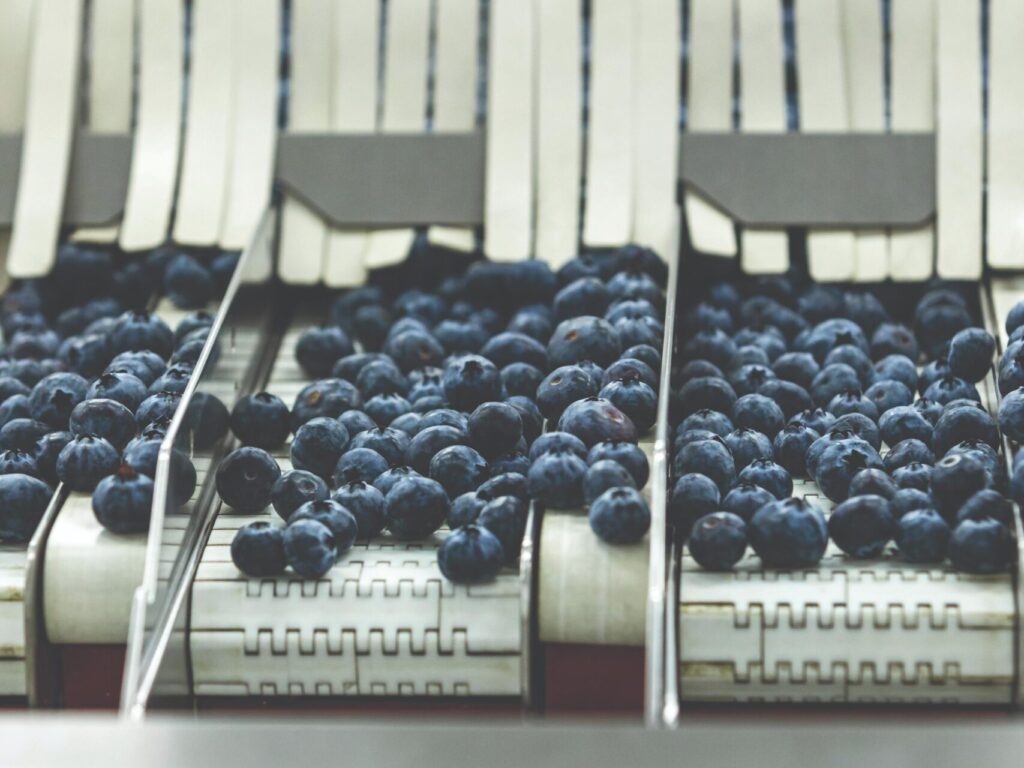Introducing Namibia
Namibia is ranked amongst the world’s most politically stable countries. The Namibian government is committed to stimulating economic growth and creating employment through the attraction and retention of investments.
Namibia is strategically located on the southwestern coast of Africa and serves as a quintessential trade conduit with the rest of the world for landlocked neighbouring countries such as Botswana, Zambia, Zimbabwe and the Democratic Republic of Congo through the port of Walvis Bay. Compared to other ports in the region, the congestion-free airport offers shipping lines time savings of up to five days to Europe and the Americas. It also serves as a springboard into the Southern African Development Community (SADC) trade block, with a market access of 330 million people.
Namibia is endowed with natural wind and sun resources and is considered to be amongst the most competitive destinations in the world with the potential to become a producer and exporter of green hydrogen, reckoned to catalyse the decarbonisation of the planet.
Namibia’s primary infrastructure is well-developed and modern, with a good transport system whose road infrastructure quality has been ranked as the best in Africa for the past five years. Additionally, Namibia offers asophisticated financial sector, an efficient communication system with global cellular networks and globally competitive broadband. The economy is mostly export-driven, with mining, tourism, fishing and agriculture being Namibia’s key sectors.
Exchange Rate
US$1=N$17.3336 (24 September 2024, Bank of Namibia)
Trade Agreements
- African Continental Free Trade Agreement (AfCFTA)
- African Growth and Opportunity Act (AGOA)
- Namibia-Zimbabwe Preferential Trade Agreement
- Southern African Customs Union (SACU)
- Southern African Customs Union (SACU) – European Free Trade Association (EFTA)
- Southern African Customs Union (SACU)
- Common Market of the South (MERCOSUR)
- SACU – Mozambique – United Kingdom (UK) Economic Partnership Agreement (EPA)
- Southern African Development Community (SADC)
- Southern African Development Community (SADC) – European Union (EU) Economic Partnership Agreement (EPA)
- World Trade Organisation (WTO
Investment Climate
The Namibia Investment Promotion and Development Board (NIPDB) serves as the first-point contact for potential investors and provides comprehensive services from the initial consulting stage to the operational stage. The NIPDB also provides general information and advice on investment opportunities, incentives and procedures.
The task of the NIPDB is to help investors reduce red tape by liaising with Government departments and regulatory agencies, including obtaining work visas for foreign investors. The Government of Namibia, therefore, welcomes and encourages foreign investment to help develop the national economy for the benefit of its people.
Rankings
- 2nd in Africa for Freedom of the Press, World Press Freedom Index – Reporters Without Borders (2024)
- 1st in Africa for the past five years for Quality and Connectivity of Road Infrastructure, Global Competitiveness Report – World Economic Forum (2019)
- 1st in Africa (8th globally), Global Gender Gap Report – World Economic Forum (2023)
- 4th in Africa for the least corrupt public sector, Corruption Perception Index – Transparency International (2022)
- 8th in Africa for Overall Good Governance – Ibrahim Index of African Governance (2022)
- Top 5 in Africa, Investment Attractiveness Index, Annual Survey of Mining Companies – Fraser Institute (2023)
Fraser Institute Annual Survey of Mining Companies Ranking, 2021
| CATEGORY | AFRICA | WORLD |
| Policy perception | 3 | 33 |
| Political stability | 4 | 43 |
| Security indices | 3 | 44 |
| Geographical database | 1 | 27 |
Policy Environment
Namibia’s foreign investment policy is governed by the Foreign Investment Act (No. 27 of 1990). The aim of the Act is to address and stimulate foreign investment in Namibia. The Namibia Investment Promotion Act (NIPA) is currently under review and will replace the FIA Act
Why Namibia?
POLITICAL STABILITY
- 34 years of stable democracy and peace
FINANCIAL SOPHISTICATION
- Well-developed financial and banking sectors
- 3rd largest pension fund industry in Africa
LOGISTICAL HUB
- High-quality logistical infrastructure and competence (including regional international land, air sea connections)
ADVANCED INFRASTRUCTURE
- Stable electricity, water supply and sanitation
ACCESSIBLE WORKFORCE
- An educated, job-seeking, English- speaking population that can be upskilled using a national fund
NATURAL RESOURCES
- Local and regional abundance of solar, wind, oil, gas, metal, mineral and agricultural resources
RULE OF LAW
- Established and functioning rules and regulations
QUALITY OF LIFE
- Comfortable weather, short commutes, quality schools, hospitals and entertainment
MARKET ACCESS
- Several preferential trade
agreements, including AfCFTA,
EPAs, AGOA and MERCOSUR
Diversification Strategy
Since 2016, Namibia has been hit by a series of negative events, including a commodity price downturn, an extended sub- continental drought and, like the rest of the world, the Covid-19 pandemic. The combination of these negative trends has amplified the cyclical nature of Namibia’s economy.
As part of a high-level intervention to reduce the impact of these events, the Government of Namibia engaged the Harvard Kennedy School’s Growth Lab in 2019 with the aim of creating a roadmap to a more sustainable economic development and growth trajectory. A joint team of representatives from the Bank of Namibia (the country’s central bank), the Ministry of Finance, the National Planning Commission, Ministry of Industrialisation and Trade and the Harvard Growth Lab has been shepherding the process alongside other Namibian stakeholders.
The work Namibia has been doing with the Harvard Growth Lab predominantly focuses on:
- Diagnosing structural deficiencies in the economy
- Assessing and understanding the country’s economic complexity shortcomings
- Identifying specific strategies which could address the lack of economic depth
One of the major objectives that emerged from this research and analysis was the development of the Country Economic Diversification Strategy to address core issues impacting Namibia’s economy. The strategy is expected to:
- Reduce exposure to commodity price fluctuations and cycles
- Develop new sectors and products in the economy
- Focus on services and the economic value they create
- Increase economic complexity by facilitating the conversion of primary products from the commodities sector into secondary products
- Create new sectors and industries that will support the country’s energy transition ambitions to make Namibia a continental leader in the green economy
Economic diversification efforts will be based on several sectors and prioritisation that leverages existing productive capabilities that may enable transitions towards more sophisticated economic activities. These sectors include:

RENEWABLE ENERGY
Areas of investment opportunity
• Mineral fuels
• Machinery & mechanical appliances, nuclear reactors
• Vehicles, parts & accessories
Why invest?
• Established industry
• Abundant resources (solar, wind & biomass)
• NamPower Modified Single Buyer (MSB) model
• Export to the Southern African Power Pool (SAPP)
• More affordable power for more industries

FOOD INDUSTRY
Areas of investment opportunity
• Bidding on public green schemes
• Partnering with local project owners/farmers (projects of various sizes are available)
Why invest?
• Well-established industry
• Existing & expanding market access (organic meat to Europe and US, grapes and fish to Europe)
• Secure, private land tenure
• National, regional & international need

TOURISM
Tourism and hospitality has become synonymous with Namibia. The contribution of tourism to the national GDP was about N$7 billion, the third largest contributor after mining and agriculture. Conservation is a cornerstone of the Namibian experience, Namibia was the first African country to incorporate protection of the environment into its constitution.
Why invest?
Natural resources, especially in the form of natural beauty are abundantly available.

SERVICES (DIGITAL & GLOBAL BUSINESS)
Areas of investment opportunity
Call centres, training centres and business process outsourcing centres.
Why invest?
• Advanced digital infrastructure
• Excellent national connectivity
• Linguistic prowess
• English as the only official language – many citizens also fluent in German, Portuguese, French, Spanish & Mandarin

MINING, CHEMICALS & ADJACENT INDUSTRY
Areas of investment opportunity
Diamonds | Uranium | Copper | Lead | Zinc | Manganese | Tin | Rare Metals (REE, Tantalum, Niobium) | Lithium | Gold | Silver | Salt | Marble | Granite
• Top 10 producer of diamonds
• Fourth largest exporter of non-fuel minerals in Africa
• Fourth largest producer of uranium oxide
Why invest?
• Significant natural resources
• Very well established local & regional mining industries
• Established salt & plastic industries
• Green hydrogen developments
• Oil & gas finds
• Diversification & quality employment

TRANSPORT & LOGISTICS
Areas of investment opportunity
The transportation logistics industries have always been lucrative and are expected to grow exponentially as both the local and regional economies grow and become even more interconnected.
Why invest?
• Market access
• Logistical hub
• Available workforce
• Regional resources
• Diversification & quality employment

